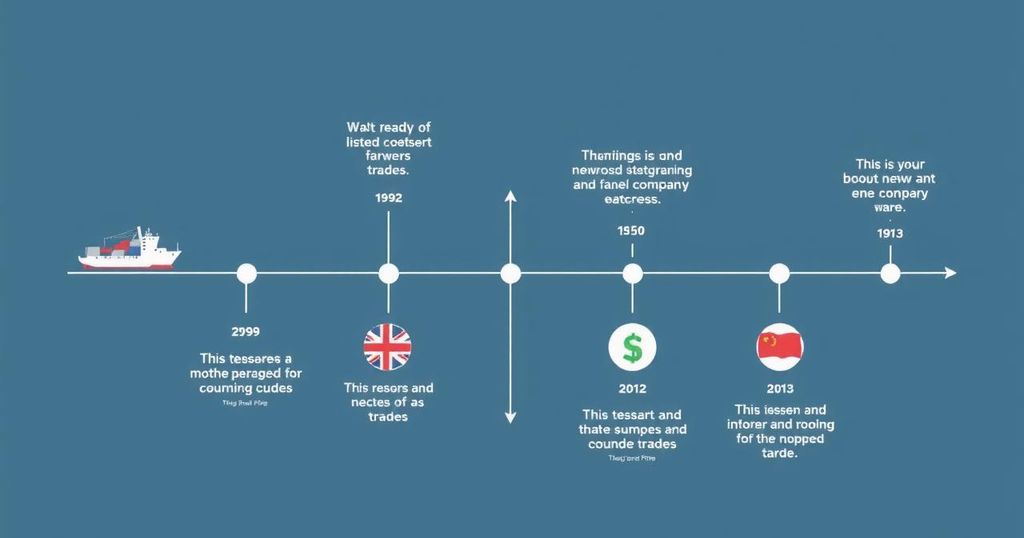Former President Donald Trump has reinitiated a trade war through significant tariffs affecting Mexico, Canada, and China. His aggressive trade policies echo past actions during his first term, raising concerns about global economic repercussions and consumer prices. As he prepares for the 2024 election, Trump promises further tariff increases, while the Biden administration has taken a more targeted approach but maintains existing tariffs.
In recent developments, former U.S. President Donald Trump has reignited a trade war by imposing significant tariffs on goods originating from key trading partners, namely Mexico, Canada, and China. This escalation follows a history of tariff actions during his first term, raising concerns among economists about potential negative repercussions on global economies and increased prices for consumers.
The timeline of events reveals a recurring pattern of tit-for-tat tariffs between the U.S. and its major trade allies. Initially, during his first term, Trump targeted China with aggressive tariffs aimed at countering alleged unfair trading practices, including theft of intellectual property and coercion of U.S. firms to transfer technology. This action led to retaliatory tariffs from China on various U.S. products, creating widespread disruption in trade.
Transitioning to the current administration, President Joe Biden has maintained most of the existing tariffs but introduced targeted restrictions on high-tech exports to China. His approach, however, diverges from Trump’s broader tariff strategies, prioritizing specific sectors over sweeping tax increases.
As both Biden and Trump prepare for the upcoming presidential election, trade policy has become a focal point, with Trump promising even steeper tariffs on broad categories of imports if re-elected. A serious debate is emerging regarding the implications these tariffs would have on domestic consumers and international relations. Harris, Biden’s campaign partner, criticized the idea of universal tariffs, predicting significant financial burdens on families.
Fast forward to November 2024, Trump’s election victory has set the stage for another phase of tariff increases. His inauguration speech reaffirmed intentions to impose hefty tariffs on imports, with specific plans including a 25% tariff on Canada and Mexico while still contemplating actions against China. The first executive action under his new term included a national emergency declaration to justify imposing tariffs on these imports.
The subsequent days saw various trade skirmishes surface, including proposed tariffs on Colombia as a consequence of diplomatic tensions. Trump’s executive order quickly moved to impose substantial tariffs on imported goods from all three countries.
In early February, as tariffs on China and North American partners began to be enforced, retaliatory measures rapidly followed. China escalated the situation with counter-tariffs on a range of American products, exacerbating trade tensions. By March, further expansions of tariff regimes threatened a comprehensive disruption of established trade relationships.
Trump’s ongoing decisions reflect a pattern of issuing exemptions for certain sectors, such as the automotive industry, amid mounting pressure from businesses. However, the uncertainty surrounding tariffs continues to ripple through financial markets, prompting instability in consumer confidence and business investments, highlighting the unpredictable nature of Trump’s trade policies.
The resurgence of Trump’s trade war signals a potential shift in global economic dynamics, characterized by extensive tariff measures targeting major trading partners. The timeline illustrates a complex interplay of retaliatory actions that may exacerbate economic challenges domestically and internationally. As the political landscape evolves, the implications of these policies warrant close scrutiny for their impact on consumers and global trade relations.
Original Source: apnews.com






